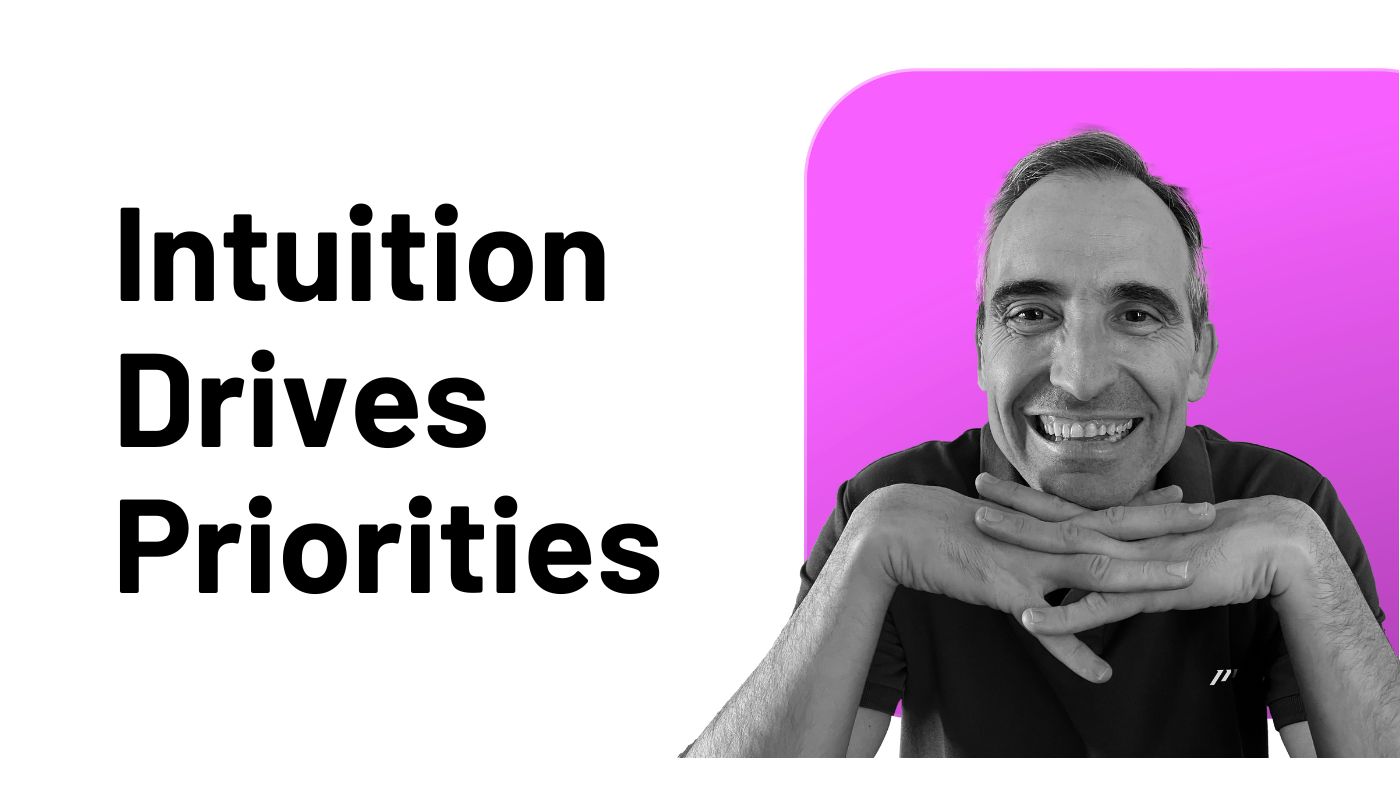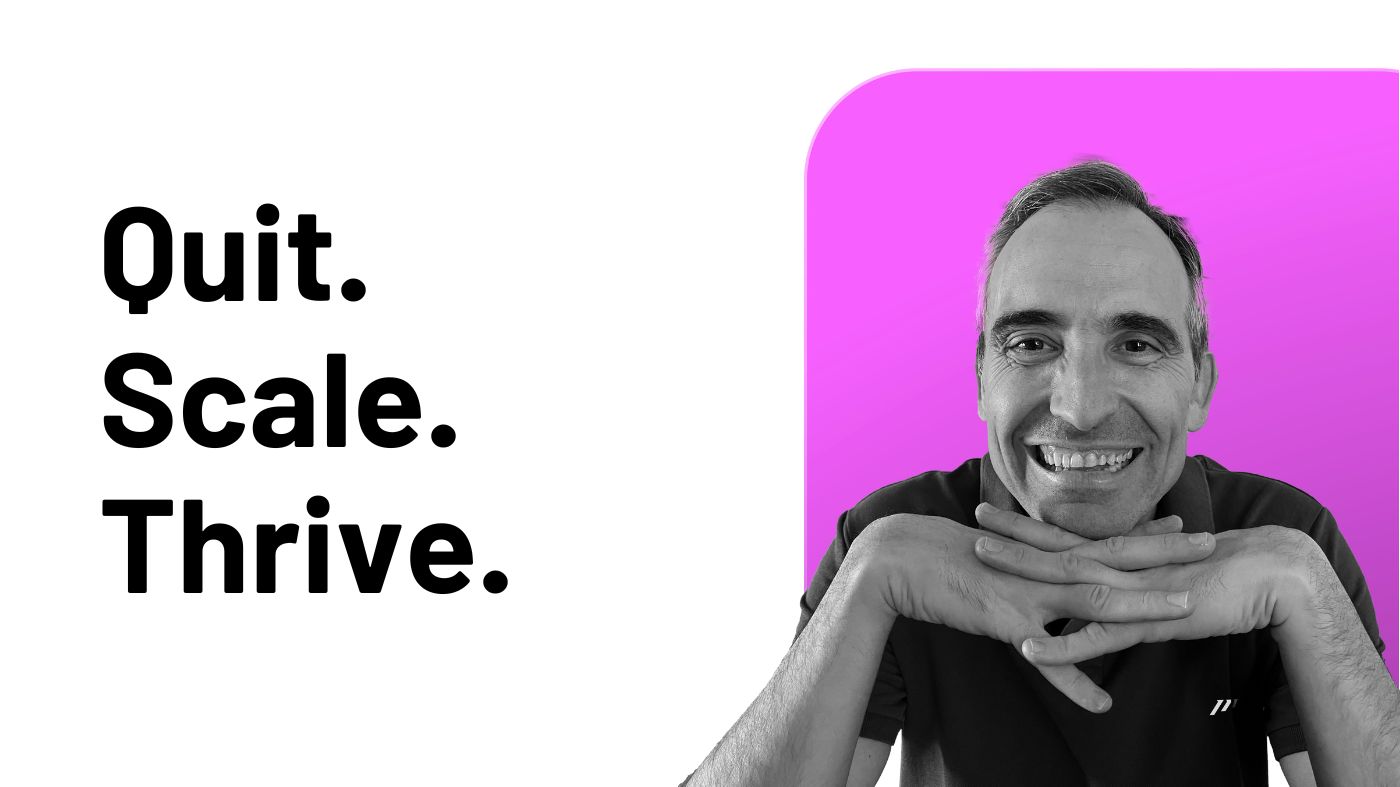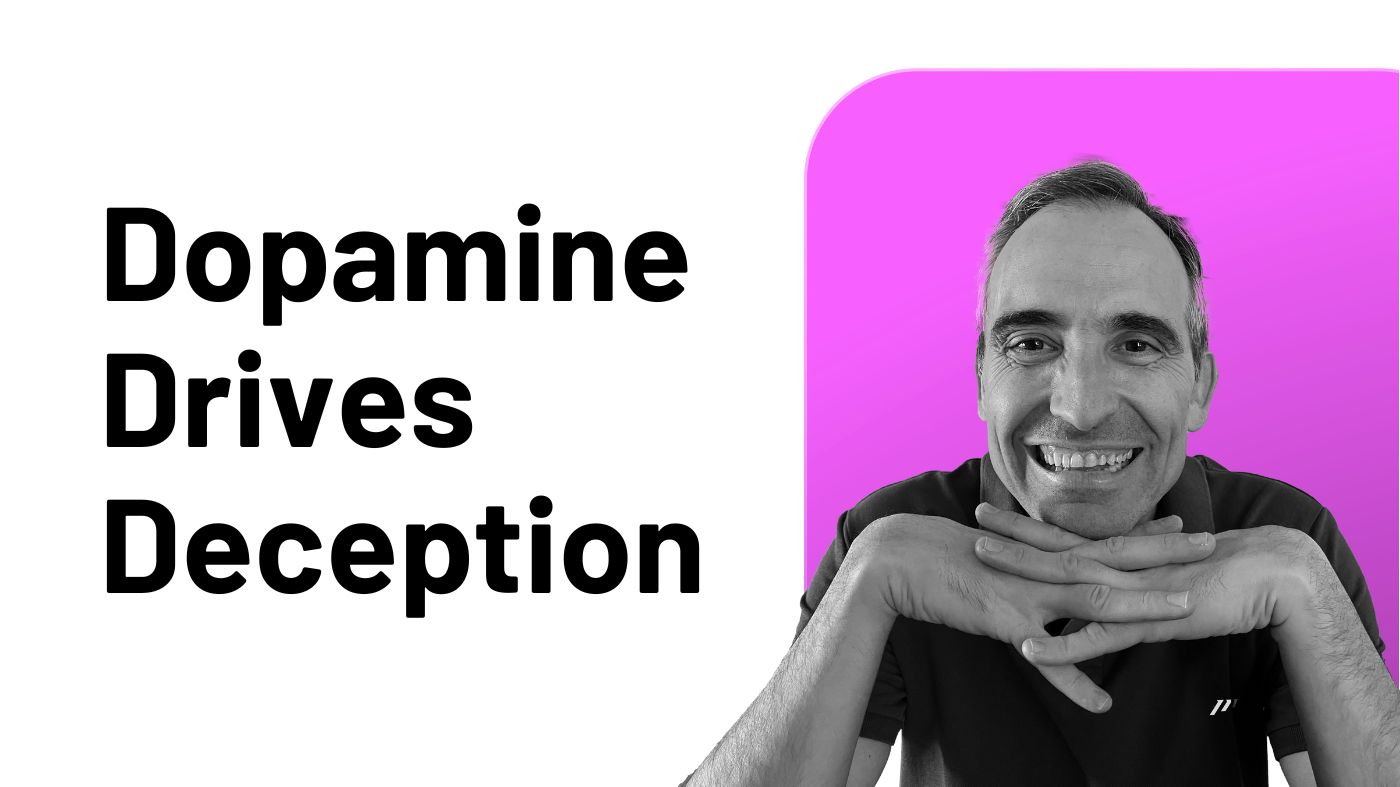“Let our AI handle your calendar so you can focus on what matters.”
It’s a seductive promise that speaks directly to overwhelmed executives, entrepreneurs, and managers drowning in scheduling demands.
As AI scheduling assistants grow increasingly sophisticated, promising to analyze your preferences, prioritize your meetings, and optimize your workday, the temptation to hand over the reins of your calendar becomes nearly irresistible.
But here’s the uncomfortable truth: the professionals who feel most overwhelmed by their calendars are precisely the ones who can least afford to surrender control to algorithms.
When your schedule reflects complex stakeholder relationships, strategic priorities that shift with the business landscape, and decisions that carry significant consequences, the gap between AI’s capabilities and the nuanced reality of executive decision-making becomes dangerously wide.
As someone who manages multiple businesses and teams of over 70 people, I’ve learned through costly mistakes that while AI can be a powerful ally, it cannot replace (at this moment) the human at the helm of priority management.
When my own AI assistant once double-booked meetings with two critical stakeholders, unable to discern that one represented a significant, talking about revenue, opportunity while the other was a routine check-in that could have been rescheduled, the technology’s limitations became painfully clear.
This isn’t about resisting technological innovation. Rather, it’s about understanding where the true value of AI ends and where irreplaceable human judgment begins.
In the realm of priorities and time management for high-performing professionals, that line is far more consequential than most AI evangelists care to admit.
The Human Edge: Intuition and Contextual Intelligence
What we casually call “intuition” is actually a sophisticated information processing system built on years of experience and thousands of subtle observations.
When you decide to push back a meeting with one team member while making time for another, you’re not just consulting your calendar. You’re drawing on a rich tapestry of uncodified knowledge: the team member’s emotional state in recent interactions, the political implications within your organization, the ripple effects on related projects, and dozens of other factors that never appear in any digital system.
This invisible complexity is what makes human decision-making so powerful in time management.
Consider what happens when you receive a meeting request from a key client: In milliseconds, your brain processes their communication style, your history with them, the current status of their account, recent market shifts affecting their business, and your own energy levels that day.
You intuitively know whether this meeting requires your immediate attention or can be scheduled for next week and whether it should be a quick call or a more substantive in-person discussion.
What makes intuition particularly fascinating is that even we ourselves often cannot articulate the rational thinking behind our intuitive judgments.
“The price of anything is the amount of life you exchange for it.” — Henry David Thoreau
Neurologically speaking, intuition operates primarily through the brain’s limbic system and involves what scientists call “implicit learning”, the unconscious acquisition of knowledge that guides decision-making without conscious awareness of the underlying rules or patterns.
When you “just know” that a particular client needs more attention this week despite no obvious signals, your brain is processing what psychologists call “thin slices” of behavioral information that fall below conscious detection.
This operates through what Nobel laureate Daniel Kahneman describes as “System 1” thinking: fast, automatic mental processes that happen without deliberate control.
While “System 2” (our analytical mind) might struggle to justify these decisions afterward, research in cognitive psychology confirms that expert intuition often produces better outcomes than purely analytical approaches, particularly in complex, dynamic environments like those faced by busy professionals.
This sophisticated neural architecture, built through years of domain-specific experience, creates a decision-making system that no AI can currently replicate.
AI may eventually simulate aspects of intuition, but without lived human experience and the emotional intelligence that comes with it, these systems will always miss critical dimensions of truly effective priority management.
AI systems, even advanced ones, operate on data they can access and patterns they’ve been trained to recognize. But they can’t access what isn’t explicitly documented.
They don’t understand that the meeting that seems low-priority on paper actually involves a stakeholder whose goodwill you’ve been cultivating for months.
They can’t factor in that you’re mentally sharpest for strategic thinking in the morning but better at relationship-building conversations after lunch.
This gap between what AI can process and what humans intuitively understand explains why even sophisticated scheduling tools make decisions that leave professionals scratching their heads.
The algorithms can optimize based on stated preferences and past patterns, but they cannot replicate the contextual intelligence that informs truly effective priority management at least not yet.
Understanding True Priorities: The ICOR® Methodology
When we talk about setting priorities, most professionals think they know what that means: identifying what’s most important and doing it first. But true priority management is far more nuanced, especially for busy professionals juggling multiple responsibilities.
This is where the ICOR® methodology provides clarity that AI scheduling tools fundamentally lack.
ICOR® approaches priority setting not as a simple ranking exercise but as a contextual evaluation process that weighs multiple dimensions simultaneously.
The methodology recognizes that priorities aren’t static entities that can be programmed into an algorithm: they’re dynamic judgments that shift based on changing circumstances, evolving goals, and the interdependence of various activities.
“The key is not to prioritize what’s on your schedule, but to schedule your priorities.” — Stephen Covey
At its core, effective priority management requires understanding the difference between urgency and importance, between short-term demands and long-term value creation.
When an AI tool attempts to prioritize your calendar, it typically relies on explicit markers like deadline proximity, meeting attendee seniority, or keywords in email subjects. But these surface-level indicators miss the deeper considerations that truly determine where your time should be invested.
For instance, a meeting with a junior team member might seem low-priority to an algorithm, but if that conversation prevents a key project from derailing next week, it’s actually one of your highest priorities today.
Similarly, a request from a C-suite executive might trigger automatic prioritization by an AI, but if it’s about a peripheral initiative that doesn’t align with your core objectives, it deserves less immediate attention than your algorithm would suggest.
The ICOR® approach acknowledges that priority setting is ultimately about trade-offs: conscious decisions about what deserves your attention now and what can wait.
These decisions require a holistic understanding of your professional ecosystem, including relationships, strategic goals, personal capacity, and organizational context.
This is precisely the kind of multi-dimensional evaluation that AI systems struggle to perform, despite their impressive capabilities in other domains.
What makes human priority management superior isn’t just our ability to process these various factors: it’s our capacity to integrate them intuitively, adjusting weights and considerations based on subtle shifts in our environment.
Until AI can truly understand the difference between “important according to the data” and “important according to the full context of your professional life,” it remains an inadequate substitute for human judgment in priority setting.
The Time Management Paradox
There’s a fundamental paradox at the heart of time management that AI scheduling tools consistently fail to grasp: not all time is created equal.
In the ICOR® methodology, we make a critical distinction between two types of time that shape a professional’s schedule: constrained time and controllable time.
Constrained time represents the non-negotiable commitments in your calendar: the client meetings, board presentations, and team stand-ups that form the skeleton of your professional obligations.
These events typically have fixed dates, times, and participants that cannot be easily moved without consequences.
They represent external commitments that you’ve already prioritized by accepting them.
Controllable time, by contrast, is the space between these fixed commitments: the blocks where you have agency to decide what deserves your attention.
This is where the real work of priority management happens, where you determine whether to tackle strategic planning, creative work, relationship building, or critical thinking tasks.
AI scheduling tools fundamentally misunderstand this distinction.
They treat all calendar entries as roughly equivalent data points to be optimized, missing the qualitative difference between a time constraint and a time choice.
When an AI suggests rescheduling a Deep Work session to accommodate a last-minute meeting request, it fails to recognize the profound difference between moving a constraint and sacrificing a strategic choice.
Busy professionals need to structure their week with this distinction firmly in mind.
Your calendar should first anchor around your true constraints, creating a realistic framework of commitments.
Then, the remaining time becomes your canvas for intentional work: the tasks that move your most important projects forward and align with your highest priorities (goals).
This approach requires a rhythm of weekly and daily planning that accounts for both your fixed commitments and your strategic needs.
It means protecting blocks of controllable time from becoming consumed by the constant stream of requests and apparent urgencies that flood a busy professional’s inbox.
Most importantly, it means maintaining the human judgment to distinguish between what must be scheduled and what should be scheduled.
AI tools excel at pattern recognition and optimization within defined parameters.
What they cannot do is understand the subtle but crucial distinction between the various types of time that make up a professional’s schedule, and it’s precisely this understanding that separates effective time management from mere calendar optimization.
Systems vs. Tools: Why a Productivity Methodology Matters
There’s a revealing pattern I’ve observed among professionals who eagerly embrace AI scheduling tools: they often lack a coherent productivity system to begin with.
This isn’t coincidental.
The allure of AI time management is strongest precisely for those who haven’t developed their own systematic approach to productivity.
Without a methodology to guide decision-making, the promise of algorithmic salvation becomes particularly tempting.
But here’s the uncomfortable truth: AI scheduling tools aren’t a substitute for a productivity system.
They’re just tools that work within (or sometimes against) whatever system you already have.
If you lack a system, automating your calendar decisions won’t create one; it will simply automate chaos.
“Automation applied to an inefficient operation will magnify the inefficiency.” — Bill Gates
A true productivity system based on ICOR®, for example, isn’t just about managing your calendar. It’s a comprehensive methodology for aligning your time with your priorities, your priorities with your goals, and your goals with your vision.
It establishes the principles and practices that guide every decision about where your time and attention should go. No AI tool, no matter how sophisticated, can create this methodology for you (at least, today).
The foundation of any effective productivity system is routines, consistent practices that eliminate decision fatigue and ensure important activities happen reliably.
Your morning planning routine, your weekly agenda meeting, your daily wrap-up, these aren’t just habits: they’re the infrastructure that supports intentional work.
AI scheduling tools can’t establish these routines for you.
They can’t determine which practices best support your cognitive style, energy patterns, or professional demands.
They can’t create the reflection points that allow you to learn from experience and refine your approach.
Most importantly, they can’t provide the discipline required to maintain these routines when life gets chaotic.
The professional who relies primarily on AI for time management is essentially outsourcing critical thinking about their most precious resource.
They’re delegating decisions about where their attention goes without first establishing the methodology that should guide those decisions.
It’s like hiring a financial advisor without first determining your financial goals and risk tolerance.
This explains why AI scheduling so often feels helpful in the moment but leaves professionals feeling disconnected from their own calendars over time.
Without the foundation of a personal productivity system, algorithmic decisions accumulate into a schedule that may be optimized according to certain metrics but doesn’t align with your deeper intentions or highest priorities.
Before considering AI assistance for your schedule, first establish your productivity system.
Define your routines, clarify your decision criteria for time allocation, and create the reflection practices that allow for continuous improvement.
Only then can you effectively evaluate where AI might enhance rather than undermine your approach to time management.
Finding the Right Balance: How to Actually Use AI Effectively
Despite the limitations I’ve outlined, AI scheduling tools aren’t without value.
The key is understanding where they can genuinely enhance your productivity system rather than undermine it.
When deployed thoughtfully within the right boundaries, AI can serve as a powerful amplifier of your own decision-making rather than a flawed replacement for it.
The most effective approach follows a simple principle: delegate the mechanical but retain the meaningful.
AI excels at handling routine scheduling tasks that don’t require contextual judgment or intuitive understanding.
These are precisely the lower-value activities worth automating to create more space for the high-value decisions only you can make.
“Never let a computer do what you can do in your heart.” — Ray Bradbury
Here’s a practical framework for deciding what aspects of scheduling to delegate to AI and what to keep firmly under your control:
Delegate to AI:
-
Meeting coordination across multiple participants’ calendars.
-
Rescheduling routine check-ins when conflicts arise.
-
Suggesting potential times for standard meetings based on your typical availability patterns.
-
Handling the mechanics of calendar invitations and confirmations.
-
Implementing simple rules you’ve established (like protecting mornings for Deep Work).
Retain Human Control:
-
Final decisions on any meeting that impacts strategic priorities.
-
Evaluating whether a meeting request aligns with your current goals.
-
Determining the appropriate duration and format for important discussions.
-
Protecting your energy by scheduling demanding tasks during your peak performance periods.
-
Creating buffer time between significant commitments.
The professionals who successfully integrate AI into their time management approach maintain clear boundaries around these responsibilities.
They leverage automation for efficiency while preserving their authority over the decisions that truly matter.
This balanced approach requires being explicit about your rules and preferences.
The more clearly you can articulate your priorities and principles to your AI tools, the more effectively they can support rather than subvert your intentions. Spend time configuring your tools with thoughtful constraints rather than surrendering to their default settings.
Most importantly, maintain regular review practices where you assess whether your AI tools are serving your productivity system or gradually steering you away from your priorities.
No technology is neutral: it either reinforces or undermines your methodology based on how you implement it.
By approaching AI scheduling as a carefully delegated assistant rather than an autonomous replacement for your judgment, you can harness its capabilities while avoiding its limitations.
The goal isn’t to remove yourself from the equation but to focus your attention on the decisions that most deserve your unique human perspective.
Conclusion: Maintaining Agency in an AI World
As we navigate an increasingly AI-augmented professional landscape, one thing becomes clear: the most valuable skill isn’t knowing how to use the latest tools but knowing when and why to use them.
The busy professionals who will thrive are those who maintain their agency amid the algorithmic assistance, who leverage technology without surrendering their judgment to it.
The fundamental question isn’t whether AI can manage your calendar; it’s whether surrendering that responsibility serves your highest goals and deepest values.
Time management isn’t just about efficiency; it’s about intentionality: ensuring that how you spend your hours aligns with what matters most to you professionally and personally.
The ICOR® methodology exists precisely because we recognize that productivity isn’t about doing more things in less time. It’s about doing the right things at the right times for the right reasons.
This level of discernment requires the full spectrum of human intelligence, not just the pattern recognition that AI excels at, but the contextual understanding, emotional intelligence, and intuitive judgment that remain uniquely human capabilities.
“In the age of AI, the value of judgment increases.” — Satya Nadella
As you evaluate the role of AI in your productivity system, consider these guiding principles:
-
Technology should amplify your agency, not diminish it.
-
Tools should serve your methodology, not replace it.
-
Efficiency gains that compromise effectiveness aren’t gains at all.
-
Your most valuable contribution is your judgment, not your ability to execute mechanical tasks.
-
The ultimate measure of productivity isn’t how many meetings you attend but whether you’re moving toward your most meaningful goals.
The professionals who master this balance, leveraging AI for mechanical tasks while preserving human judgment for meaningful decisions, will have a significant advantage.
They’ll create the space for Deep Work, strategic thinking, and relationship building that truly drives professional success, while automating the routine activities that previously consumed their attention.
The future doesn’t belong to those who surrender their calendars to algorithms but to those who thoughtfully integrate AI into a comprehensive productivity system grounded in human judgment and aligned with human values.
That future requires not blind adoption of technology but a clear-eyed assessment of where technology serves your purposes and where it might subtly subvert them.
Your time is too precious, and your potential impact too significant, to delegate your priorities to even the most advanced AI.
Trust your intuition, invest in your productivity methodology, and use technology as the powerful servant it can be, rather than allowing it to become an inadequate master.




